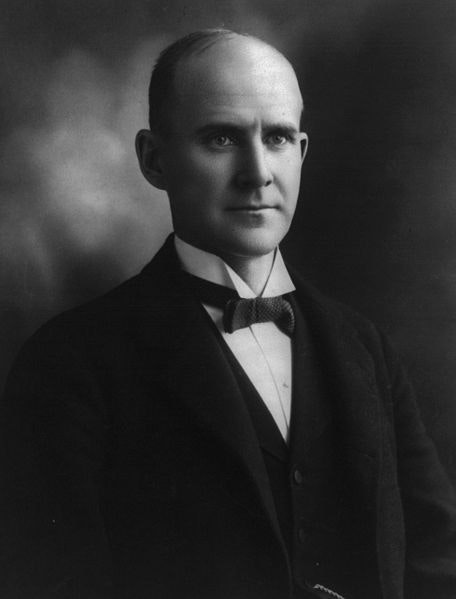If you’re looking for an alternative to Hilary or Donald, you might want to take a look at these 11 most successful third party presidential candidates in history. Perhaps we can all learn a thing or two from them.
The last President that wasn’t a member of either Democratic or Republican Party was Millard Fillmore, who served as the 13th President from 1850 to 1853. In the last 160 or so years, if you weren’t a major party candidate, you had no chances of sitting in the Oval office. Although there were a few close calls during that time, they all amounted to nothing. When you look at the names on our list, it is easy to imagine at least some of them finding their place among the most successful presidents of all time, and one of the actually did.
We ranked the most successful third party presidential candidates by the combination of a total vote count, the percentage of voters and the number of electoral votes they received in the elections. This led us to eliminate some notable candidates, like Green Party’s Ralph Nader, who won more than 2 million votes in the 2000 presidential election, but his votes amounted to less than 2.5 % of total votes. Here are our results.
11. John Bell
Election: 1860
Party: Constitutional Union
Votes / Percentage: 590,946 / 12.62
Electoral votes / Total: 39 / 303
Running mate: Edward Everett
In 1860, the United States were at the brink of the civil war. The tensions between North and South were reaching dangerous levels and the upcoming presidential elections were regarded as crucial for the future of the country. Southern states were openly declaring that the Republican nominee Abraham Lincoln is unacceptable for them and have threatened secession in case of his victory. In such climate, several former Whig members decided to form a new party, Constitutional Union Party, who took a neutral stance towards slavery. As their presidential candidate, they choose John Bell from Tennessee. Bell managed to win almost 600,000 votes and 39 electors, enough for the 3rd place in elections. And now, let’s see who else we have in our list of most successful third party presidential candidates in history.

10. John C. Breckinridge
Election: 1860
Party: Constitutional Democratic
Votes / Percentage: 851,844/ 18.20
Electoral votes / Total: 72 / 303
Running mate: Joseph Lane
It is very uncommon for a major party candidate to finish fourth in presidential elections, but that was what happened to Stephen A. Douglas, author of Kansas–Nebraska Act and a prominent member of the Democratic Party in 1860. Although he supported slavery, his stance wasn’t tough enough for the Democrats in Deep South, so when he got his party’s nomination, they decided to put forward their own candidate, John C. Breckinridge. Breckinridge managed to secure votes from both southern Democrats and Republicans, more than 800,000 of them, together with 72 electoral votes, which brought him 11 states, the second-highest electoral vote count of any third party candidate on our list of most successful third party presidential candidates in history.

9. Millard Fillmore
Election: 1856
Party: American Party
Votes / Percentage: 872,703/ 21.54
Electoral votes / Total: 8 / 296
Running mate: Andrew J. Donelson
Millard Fillmore, United States President from 1850 – 1853, was the last president not to be either a Democrat or a Republican. Fillmore who ranks 9th on our list of most successful third party presidential candidates in history was Vice-president to Zachary Taylor and inherited the office after Taylor’s sudden death in 1850. However, his Whig Party decided to nominate Winfield Scott as their candidate in the upcoming 1856 presidential elections, forcing Fillmore to seek support elsewhere. He found it in American Party and run as their candidate. This was one of the rare occasions where the incumbent president didn’t get his party’s nomination and ran as the third party candidate.

8. Eugene V. Debs
Elections 1920
Party: Socialist
Votes / Percentage: 913,693 / 3.41%
Electoral votes / Total: 0 / 531
Running mate: Seymour Stedman
Elections 1912
Party: Socialist
Votes / Percentage: 900,742 / 5.99%
Electoral votes / Total: 0 / 531
Running mate: Emil Seidel
The perennial Socialist candidate Eugene V. Debs is on our list of most successful third party presidential candidates in history, for two out of his five presidential election performances. In 1912 elections he won 900,742 votes. In 1920, he topped that with 913,693 votes, the record for any socialist candidate in history. What is even more amazing is that he was in prison at the time of the election, having been accused of treason for opposing the military draft during the World War 1. His sentence was later commuted to time served and he was released from prison in 1921.

7. James B. Weaver
Elections: 1892
Party: People’s Party
Votes / Percentage: 1,026,595 / 8.51
Electoral votes / Total: 22 / 444
Running mate: James G. Field
The People’s Party, AKA the Populists, existed for only a brief time on the United States political map of the late 19th century. But during that short period, they managed to achieve a significant election result in 1892 presidential elections, when their candidate James B. Weaver won over one million popular votes and 22 electoral votes, carrying four states.

6. Strom Thurmond
Election: 1948
Party: States’ Rights Democratic
Votes / Percentage: 1,175,946 / 2.41
Electoral votes / Total: 39 / 531
Running mate: Fielding L. Wright
We are continuing our list of most successful third party presidential candidates in history with Strom Thurmond, who became a presidential candidate for States’ Rights Democratic Party (Dixiecrats) in opposition to the 1964 Civil Rights Act, designed to end Jim Crow laws in the South. His party consisted of former Democrats who were unhappy with the direction in which Democratic Party was headed and opposed party’s intent to end segregation. After his unsuccessful bid for the presidency, Thurmond ran for Senate in 1956 and eventually became one of the longest serving members in the history of the Capitol Hill.

5. Theodore Roosevelt
Election: 1912
Party: Progressive
Votes / Percentage: 4,120,609 / 27.39
Electoral votes / Total: 88 / 531
Running mate: Hiram Johnson
In 1909, Theodore Roosevelt, the number 5 in our list of most successful third party presidential candidates in history, became so frustrated with his heir on the helm of the Republican Party, President William Howard Taft that he decided to run once more for the president’s office. After he suffered defeat at the Republican primaries, Roosevelt founded a new party, called Progressives, and ran as their candidate in 1912 elections. During the campaign, Roosevelt was shot in an unsuccessful assassination attempt as he was preparing to give a speech in Milwaukee. Despite having the bullet in his chest, he went on to deliver a 90-minute speech, claiming to feel as fit as a bull moose, which became the party’s nickname and emblem. Teddy won more than 4 million votes and 88 electoral votes, the most of any candidate on our list of 11 most successful third party presidential candidates in history, carrying 6 states. The Progressives later folded back into the Republican Party.

4. Robert M. La Follette
Election: 1924 Party: Progressive
Votes / Percentage: 4,833,821 / 16.62
Electoral votes / Total: 13 / 531
Running mate: Burton K. Wheeler
Twelve years after Teddy Roosevelt attempt, another Progressive Party incarnation had a noted performance in presidential elections. Its candidate Robert M. La Follette was a former governor of Wisconsin and a member of the US Senate. He ran in the 1924 election on the platform of nationalization of railroads, prohibition of child labor and strong opposition to the US imperialism. He also suggested that a referendum should be called before the president was able to declare war, disappointed with President Wilson’s politics during the Great War. La Follette is most remembered for his defense of free speech during the wartime, considering it essential for voices not in agreement with the government to be heard.

3. John B. Anderson
Election: 1980
Party: Independent
Votes / Percentage: 5,719,850 / 6.61
Electoral votes / Total: 0 / 538
Running mate: Patrick Lucey
With Ronald Reagan, George H. W. Bush, Robert Dole, and several other prominent politicians all seeking the presidential nomination, 1980 Republican primaries were a crowded and highly competitive affair. Despite having some success during the campaign, it became clear to John Anderson that he’s very far from receiving the Republican nomination. So, he decided to run as an independent and seek his chance in the fact that both major party candidates weren’t very popular even in their own parties, less so in the general public. Unfortunately for Anderson, Reagan had a very successful campaign and mopped the floor with both him and Carter. Anderson finished with less than 7% of the popular vote and zero electoral votes. And now, let’s see the top two entries in our list of most successful third party presidential candidates in history.

2. George Wallace
Election: 1968
Party: American Independent
Votes / Percentage: 9,901,118 / 13.53
Electoral votes / Total: 46 / 538
Running mate: Curtis LeMay
Several people have claimed that there are strong similarities between George Wallace and Donald Trump. According to Wallace’s political aide Charlie Snider, Trump is a “modern-day George Wallace”. Both men based their campaign on populist rhetoric, speaking against the establishment and perceived threats from minorities, counting on voters’ fear and hate to carry them into the White House. Although to be fair, Wallace never received “a small loan from his father” to get him going and fought in World War 2.

1. Ross Perot
Election: 1996
Party: Reform
Votes / Percentage: 8,085,402 / 8.40
Electoral votes / Total: 0 / 538
Running mate: Pat Choate
Election: 1992
Party: Independent
Votes / Percentage: 19,743,821 / 18.91
Electoral votes / Total: 0 / 538
Running mate: James Stockdale
The most successful third party presidential candidate in history is definitely Ross Perot. At one point during the 1992 presidential campaign, he polled at 39%, in front of both major parties candidates Bill Clinton and George H. W. Bush. But his need to control every single aspect of the campaign soon led him to a confrontation with his campaign managers and things started going downhill for him. Still, he won almost 20 million votes, but due to US election system none of the elector votes. His second campaign in 1996 was far less successful, but in terms of popular vote numbers its campaign is still the 3rd most successful campaign by any third party candidate in history.






